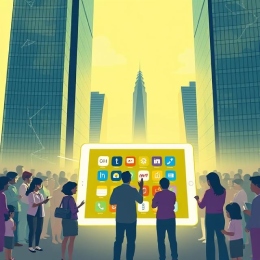Progressive Innovation

Progressive innovation is all about making small, step-by-step improvements. It is not reinventing the wheel all over again but rather making minor tweaks to something that already works, whether that is a product, a process, or a system. They may not make the headlines, but over time, they can compound into gigantic outcomes. It is not revolutionising things overnight. It is improving what you already do better, faster, or smarter.
A notable example of progressive innovation is what Adobe has done with its software. Years ago, Adobe used to sell programs like Photoshop and Illustrator in boxes. However, over time, Adobe gradually transitioned everything to the cloud and introduced Creative Cloud, a subscription-based service. Instead of one-time purchases, users now subscribe and get regular updates. It wasn't a sudden change; Adobe made it gradually, giving customers a chance to adjust while staying competitive in the fast-paced technology industry.
Other Notable Examples
- Apple updates the iPhone each year. They don't fix everything at once, but they keep adding better cameras, faster processors, and longer battery life.
- Netflix started with DVDs, then transitioned to streaming, and later developed original shows; each step built on the last.
- Instead of making the giant leap to electric cars, Toyota gradually introduced hybrid engines, saving fuel without altering the driving experience.
Why It Works
- Limits risk in driving improvement.
- Builds upon existing value instead of replacing it.
- Empowers businesses to become more competitive and expand into new markets.
Who Uses It
- Large, entrenched players who are capable of maximising existing systems.
- Companies that have loyal customers who expect consistent quality.
Disruptive Innovation

Disruptive innovation doesn't begin with fancy features or big headlines. Instead, it starts with something simple, low-cost, and easy to use, designed for people who big brands have overlooked. These products initially appear plain but continually improve, luring customers away from industry behemoths.
Take Canva, for example. While Adobe created powerful tools for professionals, Canva targeted non-designers, such as teachers and small business owners. With its drag-and-drop features, free templates, and intuitive interface, Canva opened up design to anyone. At first, Adobe didn't even consider Canva as a threat. But as Canva grew and matured, it compelled Adobe to rethink its products and pricing.
Other Notable Examples
- Uber vs. Cabs: Uber has made it easy for people to book a ride with just a few clicks on their phone instead of waving down a taxi.
- Zoom vs. Traditional Video Calls: Zoom worked quickly, looked sharp, and made video meetings convenient for everybody.
Why It Works
- Offers alternatives to over-the-top or overly complicated solutions.
- Gains word-of-mouth and viral adoption quickly.
Who Uses It
- Startups challenging the status quo.
- Companies looking to expand quickly in overlooked niches.
Radical Innovation

Radical innovation is about big, bold changes. It's not simply a matter of doing something better; it's about doing something new. These innovations have the power to introduce ideas, products, or technologies that the world has never seen before. They don't just improve an industry, and they remake it.
A prime example of this is blockchain and Decentralised Finance (DeFi). Instead of going through banks or brokers, DeFi empowers individuals to have control over their money, lending, borrowing, and investing using smart contracts on blockchain platforms. No middlemen whatsoever, only code. It's not just a slight upgrade over banking; it's a complete overhaul of what finance can be. And with the potential for increased transparency and broader access for people worldwide.
Other Notable Examples
- SpaceX and rocket reusability: These have changed the economics of space travel. Launches that used to cost a fortune are now becoming the norm and are cost-effective.
- CRISPR gene editing: A revolution that has given scientists tools to edit human DNA, which offers the potential to eradicate diseases we thought were impossible.
Why It Works
- Creates new categories and market opportunities.
- Resolves problems previously considered unsolvable.
- Brings early adopters, media coverage, and, typically, investor funding.
Who Uses It
- Startups with ambition.
- Governments or institutions that have long-term research agendas.
